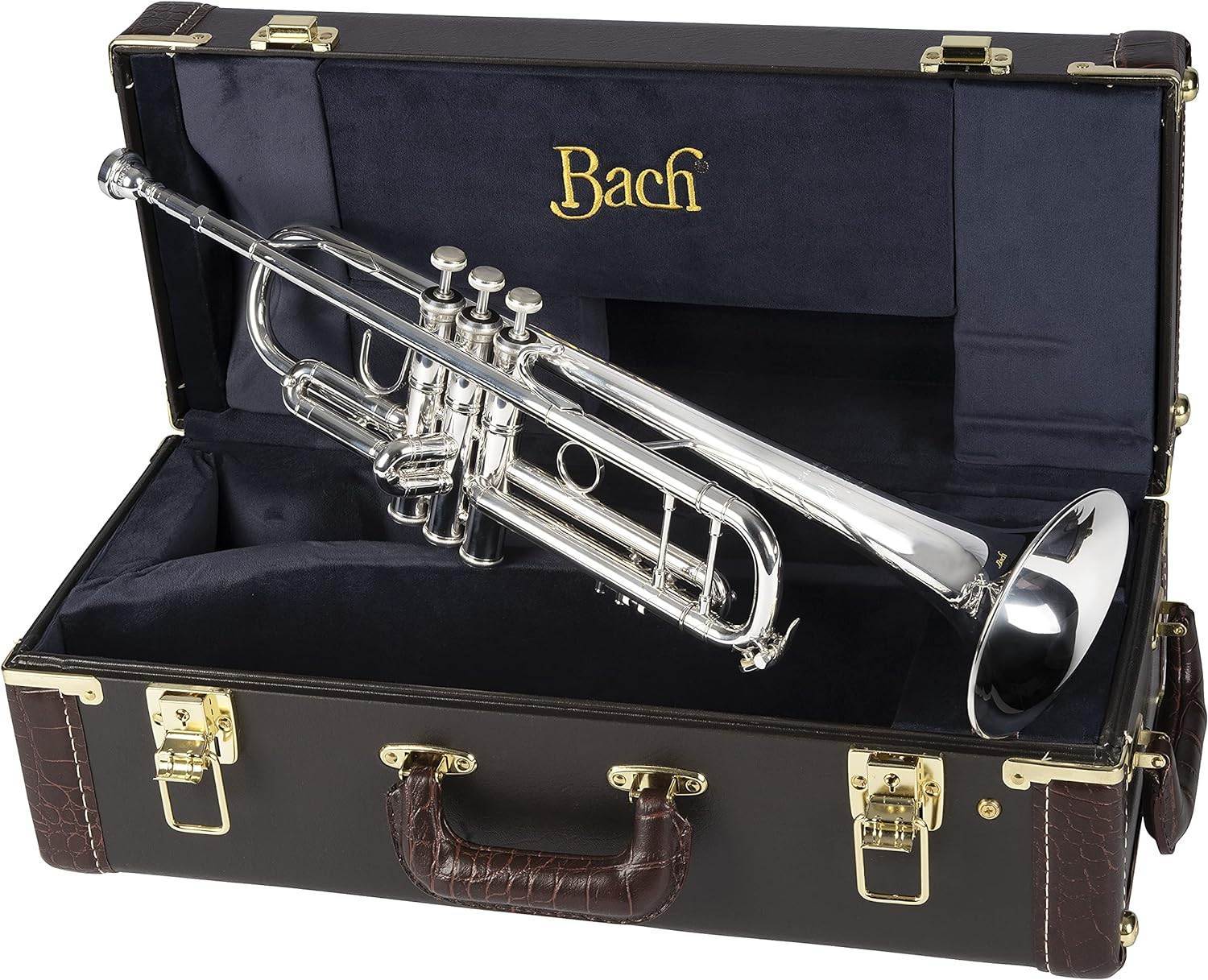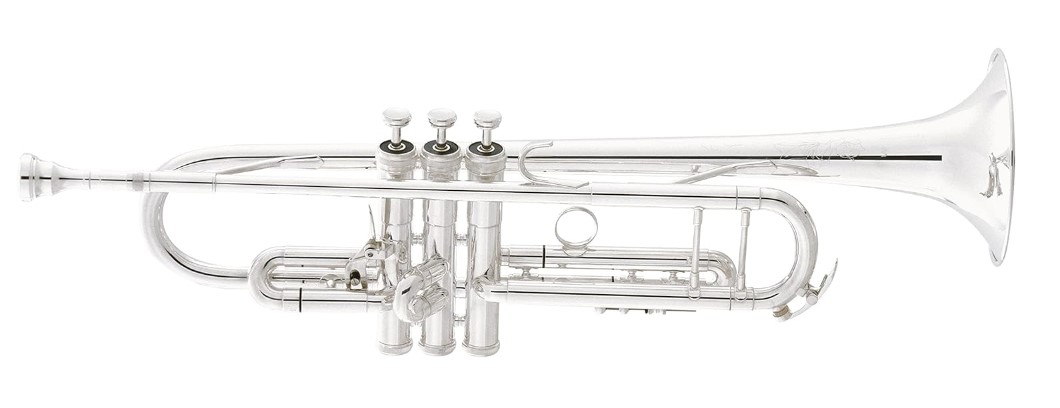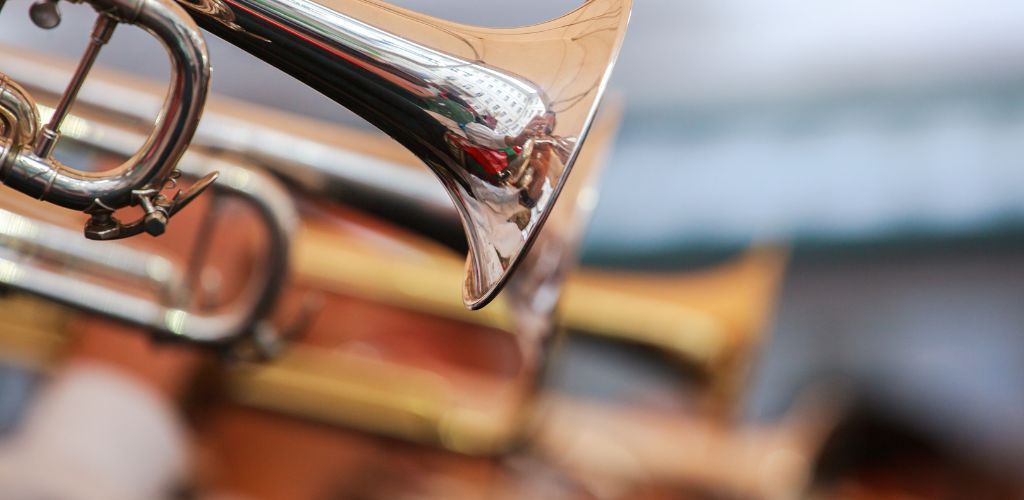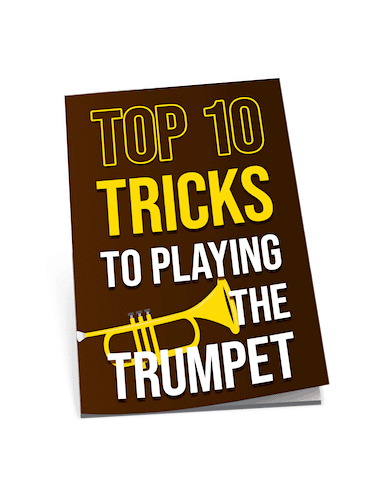If musical instruments had a popularity contest, the trumpet would certainly blow its own horn as a long-time frontrunner, from ancient ceremonies to contemporary concerts.

Through centuries, the trumpet has showcased its versatility across cultures and continents, providing the soundtrack for both royal fanfare and jazzy improvisations. Its rich tones have been signaling history from Nordic Bronze Age rituals to modern-day Grammy performances.
From Battlefield
to Baroque:
The Trumpet's Triumphant Journey Through Musical History
The trumpet, a beloved instrument in both classical and contemporary music,
Has undergone a remarkable evolution over the centuries.
Its origins can be traced back to ancient civilizations such as Egypt and Mesopotamia,
Where early versions of the instrument were primarily used for military signals and ceremonial purposes.
As time progressed, the trumpet underwent significant improvements during the Medieval and Renaissance periods, with the addition of fingerholes and slides that allowed for greater versatility and musical expression.

However, it was during the Baroque era that the trumpet truly began to shine as a solo instrument despite the absence of valves. Baroque trumpets required immense skill and technique to play, as musicians had to rely on precise embouchure control and the use of overtones to achieve different notes.
These early trumpets were often crafted by hand from precious metals, such as silver and gold, adding to their value and prestige as musical instruments.

The Classical Crescendo:
How Haydn and Mozart Elevated the Trumpet's Voice in Music
The Classical era marked a significant turning point for the trumpet, as composers such as Joseph Haydn and Wolfgang Amadeus Mozart began to feature the instrument more prominently in their compositions.

Technical advancements during this period, including the invention of the keyed trumpet and the development of new playing techniques, allowed the trumpet to showcase greater agility and expressiveness. These improvements enabled composers to write more complex and demanding parts for the trumpet, solidifying its place as a vital member of the orchestra and a respected solo instrument.
Haydn’s Trumpet Concerto in E-flat Major, composed in 1796, is a prime example of how these advancements allowed for virtuosic displays and expanded the trumpet’s range, while Mozart’s use of the instrument in his operas and symphonies demonstrated its ability to convey a wide range of emotions.
The Classical era’s embrace of the trumpet set the stage for its continued evolution and prominence in the centuries to come.
Jazz Giants:
How Louis Armstrong and Miles Davis Reshaped the Trumpet's Sound and Soul
In the 20th century, we witnessed a seismic shift in the world of trumpet playing, mainly due to the rise of jazz music.
This innovative genre pushed the boundaries of what was possible with the instrument as pioneering musicians like Louis Armstrong and Miles Davis expanded the trumpet’s range and explored new styles of playing. Armstrong’s virtuosic improvisations and powerful, expressive tone set a new standard for trumpet performance.


At the same time, Davis’s cool, understated approach and groundbreaking fusion of jazz with other genres like rock and funk further demonstrated the trumpet’s versatility.
These influential figures, along with countless other jazz greats, redefined the role of the trumpet in popular music, inspiring generations of musicians to push the limits of their creativity and technical skill. Their enduring legacy continues to shape the way we perceive and appreciate the trumpet’s vast potential in contemporary music.
From Brass to Bytes:
The Trumpet's Modern Metamorphosis in a Digital Age

In the modern era, the trumpet continues to evolve and adapt to the ever-changing landscape of music,
Thanks to a range of innovative designs, digital effects, and specialized equipment.
Custom trumpet makers now offer instruments tailored to the specific needs and preferences of individual players,
While technological advancements have introduced a world of digital effects and processing that can transform the trumpet’s sound in countless ways.
From the use of mutes and filters to the incorporation of electronic elements and looping, these modern innovations have allowed the trumpet to seamlessly integrate into a wide variety of contemporary genres, from pop and rock to electronic and experimental music.
The trumpet’s ongoing evolution is a testament to the boundless creativity and ingenuity of musicians and instrument makers alike, who continue to push the boundaries of what is possible with this iconic instrument.
As the trumpet continues to shape and be shaped by the music of our time, it remains a powerful symbol of the enduring human spirit and its ability to create beauty and meaning through sound.
Here are three trumpets that showcase this rich legacy:
Bach 180S37 Stradivarius Series

FEATURES: High-precision machined valve section and nickel-silver outer slides
OTHER INFO: The hand-hammered yellow brass bell delivers rich and compact quality
- Perfect for all genres of music
- It comes with a deluxe wood case and a Bach 7C mouthpiece
- None
When you click ‘Check Price’, you’ll see there are loads of great places to buy this item. Our personal favorite is Sweetwater for the US, and Thomann and Gear4Music for the UK & Europe.
They are the largest music retailers, with excellent customer service, competitive prices, really fast shipping, and the longest guarantees.
The professional musician who wrote this article combined many things,
from the product build, manufacturer’s reputation through to feedback
from other users, to create our famous TedScore™.
KING Trumpet-Standard, Silver (2055T)

FEATURES:
- Medium-large bore for
a warm and rich sound
- Silver-plated finish for a
classic look and feel
- Produces a warm and rich sound with excellent tonal quality
- Classic and elegant appearance
- Affordable price point for a high-quality trumpet
- May not have as many advanced features as some other intermediate-level trumpets
- Silver plating may require more maintenance and upkeep than other finishes
When you click ‘Check Price’, you’ll see there are loads of great places to buy this item. Our personal favorite is Sweetwater for the US, and Thomann and Gear4Music for the UK & Europe.
They are the largest music retailers, with excellent customer service, competitive prices, really fast shipping, and the longest guarantees.
The professional musician who wrote this article combined many things,
from the product build, manufacturer’s reputation through to feedback
from other users, to create our famous TedScore™.
Yamaha YTR-8335RS Xeno Series

FEATURES:
- Handcrafted, one-piece
bell for superior tone and projection
- Monel alloy pistons for
smooth and responsive action
- Large bore size for a rich and full sound
- Produces a rich and full sound with excellent projection
- Smooth and responsive action for precise playing
- High-quality and durable construction for reliable performance
- Higher price point than intermediate or beginner-level trumpets
- May require more maintenance and care due to its advanced features
When you click ‘Check Price’, you’ll see there are loads of great places to buy this item. Our personal favorite is Sweetwater for the US, and Thomann and Gear4Music for the UK & Europe.
They are the largest music retailers, with excellent customer service, competitive prices, really fast shipping, and the longest guarantees.
The professional musician who wrote this article combined many things,
from the product build, manufacturer’s reputation through to feedback
from other users, to create our famous TedScore™.
The Trumpet's Enduring Legacy
in Music's Everchanging Landscape
The trumpet’s remarkable journey through history, from its ancient origins to its modern-day adaptations, is a testament to the enduring power of human creativity and the instrument’s versatility.

Throughout the centuries, the trumpet has undergone countless transformations, each reflecting the musical, cultural, and technological contexts of its time.
From the battlefields of antiquity to the concert halls of the Classical era and from the smoky jazz clubs of the 20th century to the digital soundscapes of the present day, the trumpet has proven its ability to evolve and thrive in an ever-changing world.
As we look to the future, there is no doubt that the trumpet will continue to inspire and be inspired by the limitless imagination of musicians, composers, and innovators, securing its place as a timeless icon of musical expression.










